Instruction
Do you know the wedge swing?
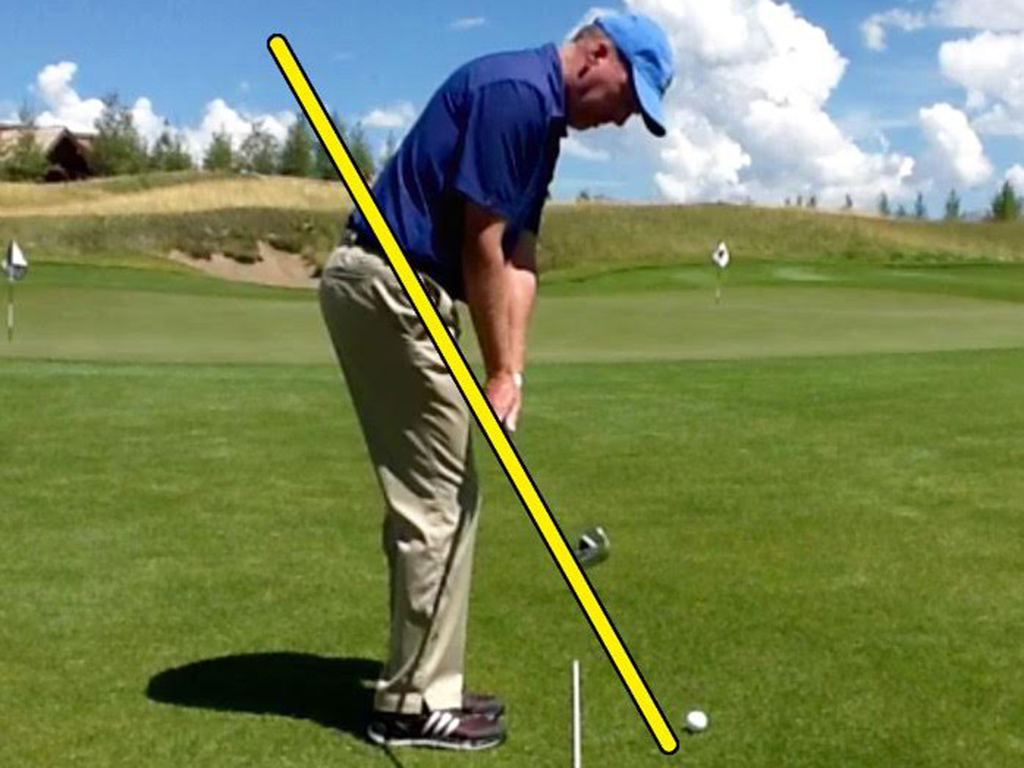
If you’re like many amateur golfers, your wedge play could use some improvement. You might even be a player who is willing to practice the short game, but you just can’t seem to get the results you’re looking for. Well, I have good news: It’s probably not your fault your wedges are under performing.
Historically, the instruction community has neglected wedge play due to the fact that most golfers prefer to work on their iron swings or try increase their driving distance. Thus, we (golf instructors) have focused mainly on the full swing, which has been invented and re-invented hundreds of times over the last few decades. I would be remiss if I neglected to mention the great work done by short game specialists Stan Utley, James Sieckmann, Dave Pelz and others, but by and large most books, articles and videos target full-swing instruction in some way.
Because of this lack of information, the wedge game and wedge swing remain mysteries to most golfers and they have been left to themselves to decipher the code of short game. Most golfers try to apply their full swing knowledge to the wedge swing and find it to be ineffective. Some try a half swing while others try slower swings, but that fact of the matter is that a wedge swing is not a regular golf swing.
I recognized this difference in technique my first year coaching players on the PGA Tour. When I observed the professionals chipping and pitching, not only were they in total control of the golf ball but their address positions and wedge swings were completely different from what I had learned as a player and taught as an instructor.
Fundamentally, the stance used by the great wedge players for wedge shots, pitches and chips was only slightly open, probably only 15 or 20 degrees. The ball position was well back in the stance for standard wedge shots and then forward for high, soft shots. I was taught to have a very open stance for all short game shots and the ball was usually positioned in the middle or slightly toward my back foot.
The wedge swing itself was incredibly different from what I had been taught. In short, they swung the club back with the club face in a semi-closed position.
They then kept it open coming through impact. They also swung the club on a much lower circle, or a more inside path than I thought was correct.
This lower swing plane allowed the sole of the wedge to hit the grass before contact, creating a sweeping action where the bounce kept the club from digging into the turf. I could see from this technique that the ball simply rolled up the face of the club and then landed softly on the green. This type of swing also allows the player to control distance and direction because of the face staying square to the plane through impact.
Additionally, they looked incredibly soft in their hands and arms and were actually allowing the wrists to move freely during most of their chips and pitches. My old chipping method was very stiff in the wrists and usually included a great deal of grip pressure.
As you can imagine, I quickly adopted the new technique for my own game and was blown away at the results. For the first time in my life I was able to chip and pitch with control and accuracy. My students also benefitted from learning this wedge swing and their feedback has been incredibly positive.
Examples of great wedge players are Lee Trevino, Jordan Spieth, Steve Stricker and 2015 Open Champion Zach Johnson, to name a few. They all swing the wedge into the ball on a shallow angle, with a club face square or slightly closed on approach. This allows them to make the “closed-to-open” swing and control the ball with ease. They also pull their lead elbow around and behind their body as they turn through the shot; one the secrets of this technique. This elbow motion might also be called a chicken wing on a full swing, but it is an essential ingredient in a wedge swing.
Finally, this article would be incomplete without mentioning wedge fitting and how professionals have their wedges adjusted to fit their swings. Wedges built by the big-name manufacturers come in a variety of lofts and bounce numbers, but almost all of them are made with a 64-degree lie angle. This is interesting because most good wedge players have their wedges bent down to a 62-degree lie angle or less. The reason for this adjustment is that if the wedge has a lie angle that is too upright, the heel of the wedge will dig into the turf on impact and cause the face to close down. As the club slams shut on impact, the ball will go low and left or the player might simply hit a chunk shot that comes up far short of the target.
If the wedge is bent to the flatter, 62-degree lie angle, the toe of the club may get caught in the grass, but even if does the club will then open through impact and keep moving with ease. Most avid golfers are aware of the importance of the loft and bounce numbers, but few know about adjusting the lie angle to improve performance.
My hope in writing this article is that you will understand how to adjust the lie angle on your wedges, learn a correct wedge swing and be able to practice effectively. A great wedge game will improve your proximity to the hole on approach shots and allow you to recover from errant shots.
- LIKE346
- LEGIT47
- WOW18
- LOL5
- IDHT7
- FLOP6
- OB5
- SHANK22
Instruction
The Wedge Guy: The easiest-to-learn golf basic

My golf learning began with this simple fact – if you don’t have a fundamentally sound hold on the golf club, it is practically impossible for your body to execute a fundamentally sound golf swing. I’m still a big believer that the golf swing is much easier to execute if you begin with the proper hold on the club.
As you might imagine, I come into contact with hundreds of golfers of all skill levels. And it is very rare to see a good player with a bad hold on the golf club. There are some exceptions, for sure, but they are very few and very far between, and they typically have beat so many balls with their poor grip that they’ve found a way to work around it.
The reality of biophysics is that the body moves only in certain ways – and the particulars of the way you hold the golf club can totally prevent a sound swing motion that allows the club to release properly through the impact zone. The wonderful thing is that anyone can learn how to put a fundamentally sound hold on the golf club, and you can practice it anywhere your hands are not otherwise engaged, like watching TV or just sitting and relaxing.
Whether you prefer an overlap, interlock or full-finger (not baseball!) grip on the club, the same fundamentals apply. Here are the major grip faults I see most often, in the order of the frequency:
Mis-aligned hands
By this I mean that the palms of the two hands are not parallel to each other. Too many golfers have a weak left hand and strong right, or vice versa. The easiest way to learn how to hold the club with your palms aligned properly is to grip a plain wooden ruler or yardstick. It forces the hands to align properly and shows you how that feels. If you grip and re-grip a yardstick several times, then grip a club, you’ll see that the learning curve is almost immediate.
The position of the grip in the upper/left hand
I also observe many golfers who have the butt of the grip too far into the heel pad of the upper hand (the left hand for right-handed players). It’s amazing how much easier it is to release the club through the ball if even 1/4-1/2″ of the butt is beyond the left heel pad. Try this yourself to see what I mean. Swing the club freely with just your left hand and notice the difference in its release from when you hold it at the end of the grip, versus gripping down even a half inch.
To help you really understand how this works, go to the range and hit shots with your five-iron gripped down a full inch to make the club the same length as your seven-iron. You will probably see an amazing shot shape difference, and likely not see as much distance loss as you would expect.
Too much lower (right) hand on the club
It seems like almost all golfers of 8-10 handicap or higher have the club too far into the palm of the lower hand, because that feels “good” if you are trying to control the path of the clubhead to the ball. But the golf swing is not an effort to hit at the ball – it is a swing of the club. The proper hold on the club has the grip underneath the pad at the base of the fingers. This will likely feel “weak” to you — like you cannot control the club like that. EXACTLY. You should not be trying to control the club with your lower/master hand.
Gripping too tightly
Nearly all golfers hold the club too tightly, which tenses up the forearms and prevents a proper release of the club through impact. In order for the club to move back and through properly, you must feel that the club is controlled by the last three fingers of the upper hand, and the middle two fingers of the lower hand. If you engage your thumbs and forefingers in “holding” the club, the result will almost always be a grip that is too tight. Try this for yourself. Hold the club in your upper hand only, and squeeze firmly with just the last three fingers, with the forefinger and thumb off the club entirely. You have good control, but your forearms are not tense. Then begin to squeeze down with your thumb and forefinger and observe the tensing of the entire forearm. This is the way we are made, so the key to preventing tenseness in the arms is to hold the club very lightly with the “pinchers” — the thumbs and forefingers.
So, those are what I believe are the four fundamentals of a good grip. Anyone can learn them in their home or office very quickly. There is no easier way to improve your ball striking consistency and add distance than giving more attention to the way you hold the golf club.
More from the Wedge Guy
- The Wedge Guy: Golf mastery begins with your wedge game
- The Wedge Guy: Why golf is 20 times harder than brain surgery
- The Wedge Guy: Musings on the golf ball rollback
- LIKE80
- LEGIT13
- WOW4
- LOL1
- IDHT0
- FLOP4
- OB1
- SHANK8
Instruction
Clement: Stop ripping off your swing with this drill!

Not the dreaded headcover under the armpit drill! As if your body is defective and can’t function by itself! Have you seen how incredible the human machine is with all the incredible feats of agility all kinds of athletes are accomplishing? You think your body is so defective (the good Lord is laughing his head off at you) that it needs a headcover tucked under the armpit so you can swing like T-Rex?
- LIKE0
- LEGIT1
- WOW2
- LOL0
- IDHT0
- FLOP0
- OB0
- SHANK2
Instruction
How a towel can fix your golf swing

This is a classic drill that has been used for decades. However, the world of marketed training aids has grown so much during that time that this simple practice has been virtually forgotten. Because why teach people how to play golf using everyday items when you can create and sell a product that reinforces the same thing? Nevertheless, I am here to give you helpful advice without running to the nearest Edwin Watts or adding something to your Amazon cart.
For the “scoring clubs,” having a solid connection between the arms and body during the swing, especially through impact, is paramount to creating long-lasting consistency. And keeping that connection throughout the swing helps rotate the shoulders more to generate more power to help you hit it farther. So, how does this drill work, and what will your game benefit from it? Well, let’s get into it.
Setup
You can use this for basic chip shots up to complete swings. I use this with every club in my bag, up to a 9 or 8-iron. It’s natural to create incrementally more separation between the arms and body as you progress up the set. So doing this with a high iron or a wood is not recommended.
While you set up to hit a ball, simply tuck the towel underneath both armpits. The length of the towel will determine how tight it will be across your chest but don’t make it so loose that it gets in the way of your vision. After both sides are tucked, make some focused swings, keeping both arms firmly connected to the body during the backswing and follow through. (Note: It’s normal to lose connection on your lead arm during your finishing pose.) When you’re ready, put a ball in the way of those swings and get to work.

Get a Better Shoulder Turn
Many of us struggle to have proper shoulder rotation in our golf swing, especially during long layoffs. Making a swing that is all arms and no shoulders is a surefire way to have less control with wedges and less distance with full swings. Notice how I can get in a similar-looking position in both 60° wedge photos. However, one is weak and uncontrollable, while the other is strong and connected. One allows me to use my larger muscles to create my swing, and one doesn’t. The follow-through is another critical point where having a good connection, as well as solid shoulder rotation, is a must. This drill is great for those who tend to have a “chicken wing” form in their lead arm, which happens when it becomes separated from the body through impact.
In full swings, getting your shoulders to rotate in your golf swing is a great way to reinforce proper weight distribution. If your swing is all arms, it’s much harder to get your weight to naturally shift to the inside part of your trail foot in the backswing. Sure, you could make the mistake of “sliding” to get weight on your back foot, but that doesn’t fix the issue. You must turn into your trial leg to generate power. Additionally, look at the difference in separation between my hands and my head in the 8-iron examples. The green picture has more separation and has my hands lower. This will help me lessen my angle of attack and make it easier to hit the inside part of the golf ball, rather than the over-the-top move that the other picture produces.


Stay Better Connected in the Backswing
When you don’t keep everything in your upper body working as one, getting to a good spot at the top of your swing is very hard to do. It would take impeccable timing along with great hand-eye coordination to hit quality shots with any sort of regularity if the arms are working separately from the body.
Notice in the red pictures of both my 60-degree wedge and 8-iron how high my hands are and the fact you can clearly see my shoulder through the gap in my arms. That has happened because the right arm, just above my elbow, has become totally disconnected from my body. That separation causes me to lift my hands as well as lose some of the extension in my left arm. This has been corrected in the green pictures by using this drill to reinforce that connection. It will also make you focus on keeping the lead arm close to your body as well. Because the moment either one loses that relationship, the towel falls.


Conclusion
I have been diligent this year in finding a few drills that target some of the issues that plague my golf game; either by simply forgetting fundamental things or by coming to terms with the faults that have bitten me my whole career. I have found that having a few drills to fall back on to reinforce certain feelings helps me find my game a little easier, and the “towel drill” is most definitely one of them.
- LIKE11
- LEGIT1
- WOW2
- LOL0
- IDHT0
- FLOP2
- OB0
- SHANK8
-

 19th Hole1 week ago
19th Hole1 week agoJohn Daly stuns fans into silence with brutal opening tee shot on PGA Tour Champions
-

 19th Hole2 days ago
19th Hole2 days agoThings got heated at the Houston Open between Tony Finau and Alejandro Tosti. Here’s why
-

 19th Hole2 weeks ago
19th Hole2 weeks ago2-time major champ announces shock retirement from the sport at age of 33
-

 19th Hole1 week ago
19th Hole1 week agoCharlie Woods finds it tough going on American Junior Golf Association debut
-

 19th Hole2 weeks ago
19th Hole2 weeks agoEdoardo Molinari reveals the latest PGA Tour golfer to turn down ‘good offer’ from LIV Golf
-

 Equipment3 weeks ago
Equipment3 weeks agoBest driver 2024: The best driver for you, as recommend by expert club fitters
-

 19th Hole2 weeks ago
19th Hole2 weeks agoScottie Scheffler had an interesting response when asked how he ‘quiets the noise’ following Players victory
-

 19th Hole2 weeks ago
19th Hole2 weeks agoJon Rahm dealt fresh blow to hopes of qualifying for 2025 Ryder Cup


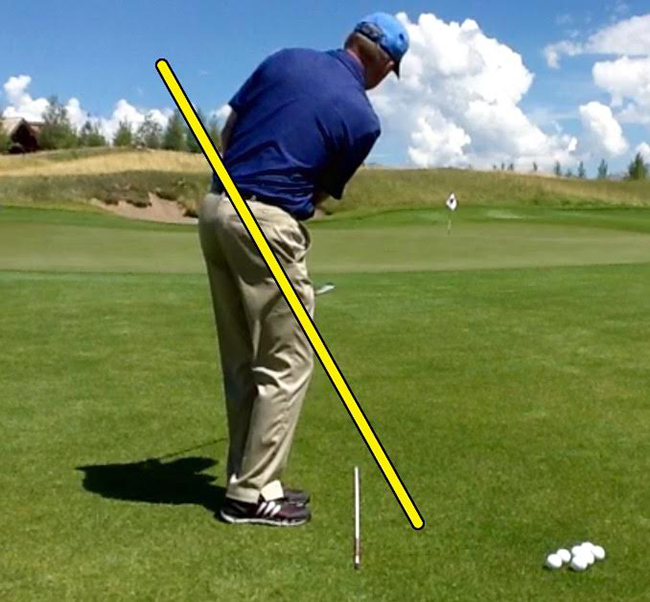
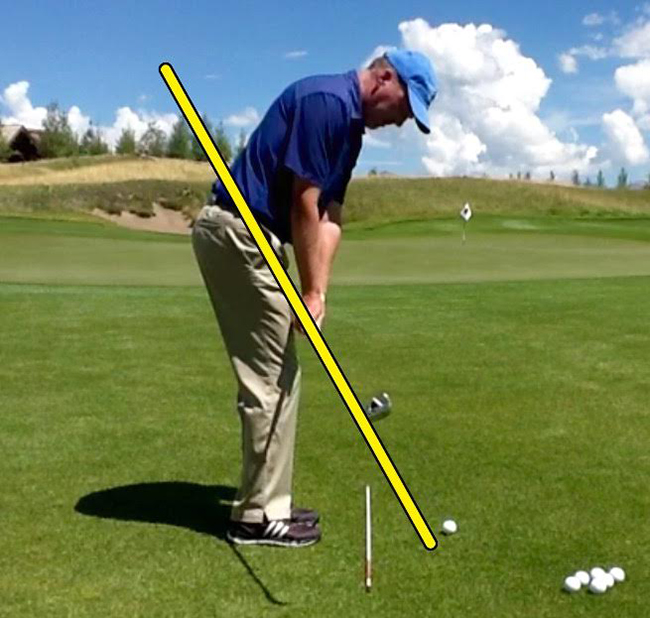












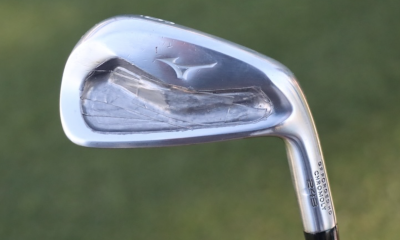

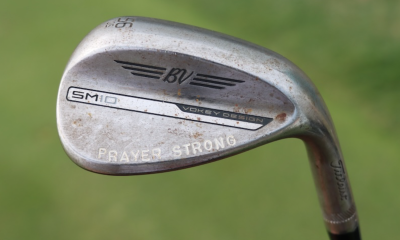

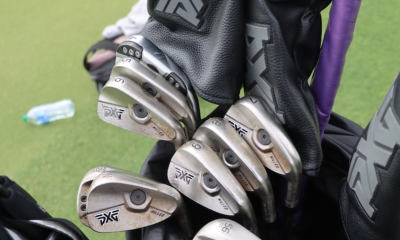

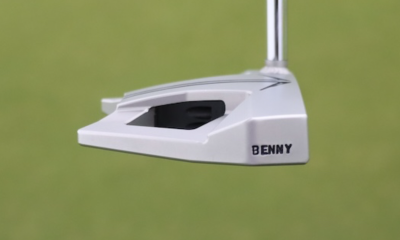

Jamho3
Mar 27, 2019 at 4:17 am
This has been an incredibly helpful article, Ive finally felt it and seen the consistant carry and spin. More please!
Billy
Sep 3, 2015 at 4:04 am
Mike
If you fully understand lie angles you will know that the reason why an upright lie angle makes the ball go left (right handers) is not because the heel of the club diggs into the turf shutting the face, but because the loft/face plane angle makes the club aim more left even though the leading edge might be square to target. Most player will have the tendency to pull short irons and push long irons because longer clubs are swung on a flatter plane, therefore allot of better player prefer flatter lie angles in wedges. The more loft the more the lie angle will affect aim..
Good article non the less!!
Doc Todd
Sep 1, 2015 at 6:56 am
My new wedges are bent 2 degrees flat to match my irons. After playing standard lie wedges my whole life, I can say that my consistency was much improved from day 1 with the new wedges. The flatter lie angle helped eliminate that “left shot” the author described.
Joe
Aug 29, 2015 at 12:56 pm
It would really help me if I could see a video of the wedge swing. Youtube.
Ronald Montesano
Aug 30, 2015 at 7:18 pm
Amen and +1. Give us a video and some commentary.
Cwolf
Aug 26, 2015 at 10:52 pm
I can’t say that I understand the flat lie angle. If making wedges at 62* could allow wedges to perform better, why wouldn’t manufactures start at 62* to begin with?? Perhaps it is more appropriate to state that better wedge players typically have a flatter angle of attack?
KN
Aug 26, 2015 at 8:35 pm
Good subject matter. They’re called scoring clubs for a good reason. You can watch your score go up or down according to how much time you dedicate to these less glamorous clubs. Now if I could just putt worth a damn.
Steve
Aug 26, 2015 at 12:35 pm
Finally, an instruction article without the word “Trackman”
Thanks!
Ed
Aug 26, 2015 at 8:32 am
The article could have used a bit more how to or been illustrated better with pictures. This is something most of us would be interested in but not enough information.
Jack
Aug 26, 2015 at 7:52 am
This article is in line with the Stan Utley method, and that method can certainly work.
Dave Pelz advocates a more upright plan for short wedge swing, and his students, including Tom Kite and Tom Jenkins, have been among the best short wedge players the game has ever seen. I prefer the Pelz method, since it requires no manipulation whatsover by the hands or forearms. A closed to open method does require such manipulation.
Matto
Aug 26, 2015 at 4:19 am
I DO know the wedge swing. I reckon I’d be almost a 1 handicapper for wedges & driving, but Christ my mid to low irons can be deplorable. **hit & hope.
jakeanderson
Aug 26, 2015 at 4:00 am
very interesting! please include video!
other paul
Aug 25, 2015 at 10:28 pm
In your article you said in one place that the club appears closed in the back swing and then stays open after impact before closing in the follow through (which is closed->square->open to path) and then you said that they were keeping their face square to their path, which they aren’t…
Just pointing out that you contradicted yourself, unless I read it wrong. Which is possible…
Jack
Aug 31, 2015 at 6:21 am
That’s what I read too. Oh well. It’s pretty hard to describe everything. That’s why a video would have been nice like others are saying.
Ken
Aug 25, 2015 at 9:12 pm
This is the kind of stuff that brings me back to Golf WRX. Great article.
KK
Aug 25, 2015 at 7:29 pm
Great info. Thanks!
Private
Aug 25, 2015 at 6:28 pm
I know Sieckmann is an advocate of flattening the lie angle on wedges. Does 1 or 2 degrees really make that much of a difference?
Jm
Aug 25, 2015 at 6:39 pm
Yes. 1-2 degrees is noticable when chipping. Especially if you like to open the face or use the heel up method.
Philip
Aug 25, 2015 at 5:16 pm
Been having some issues with my wedge shots in general – I’ll work on it this weekend, thanks.